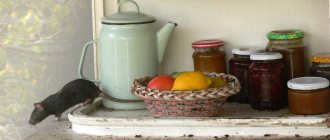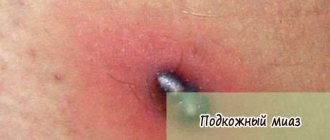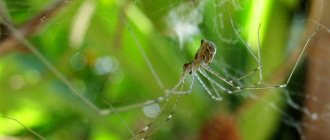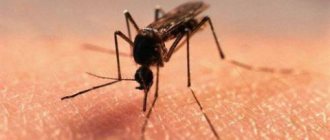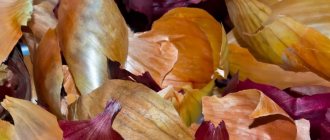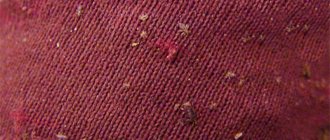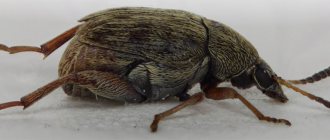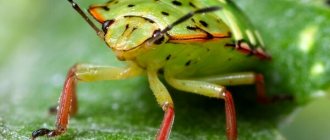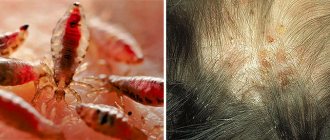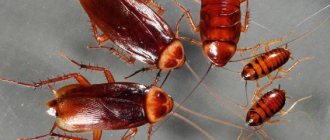Insect pests cause a significant impact on agriculture and forestry. Horntail is one of these representatives. There are 120 species of this insect. Females are usually large. The ovipositor is long and is needed for piercing leaves and further laying eggs there.
Horntails are dangerous pests
The body is cylindrical in shape. The head is rounded. The insect is a pest of coniferous trees. In appearance, the representative resembles a wasp. This is due to the peculiar body color. All subspecies of the insect are active and often settle inside the tree.
Description
The large horntail is a medium-sized insect with a cylindrical body 12-40 mm long. Females are noticeably larger than males. The chest and head of females are black, the abdomen is yellowish with purple-black middle segments. The wings are transparent, brownish with darkening. The ovipositor is long and serrated, resembling a sting. The body color of the male is black, the abdomen is reddish, with black first and last segments. The last segment is finished in a blunt funnel shape. The antennae are long and thread-like. The head is black with 2 yellow spots behind the eyes.
What does an insect look like?
Horntail is a relatively large insect. The female grows only up to 0.7 cm. The male is even smaller. The predominant main color is dark brown. Some body segments have a purple tint. The female has a long and complex ovipositor. The insect has a specific appearance. The female specimen is most easily recognized by its ovipositor. This part of the body stands out and sticks out a lot.
The color of the male is also predominantly black. The belly is reddish in color. The end of the body is funnel-shaped. There are long whiskers on the head, which are divided into 30 segments. The insect larva is white. Three pairs of underdeveloped legs are observed. Eyes are completely absent.
Horntails belong to the order Hymenoptera. Gnawing mouth. The wings are transparent. The legs are powerful and of a running type.
Females and males of horntail have different colors
The eggs are covered with a dense and elastic shell. Females deposit them in tree bark or leaves. This is possible using a pointed shape. Unlike similar wasps and bumblebees, the horntail cannot sting.
The ovipositor of the horntail resembles a kind of drill. Consists of two doors. It is almost impossible to suspect that trees are being damaged by a pest. This is due to the fact that after laying eggs the insect does not leave any traces and the new offspring will be fully formed, increasing the number of parasites.
Nutrition and lifestyle
These insects got their name because both larvae and adults have a spine at the rear end of the body. The first adults of the greater horntail appear in May. Insects are most active in June - July. Life expectancy is about 2 weeks, during which adults do not feed. Mostly these pests settle on diseased or cut down trees. Despite the fact that the jaws of adults are powerful, their bites are painless and safe.
The main damage is caused by horntail larvae. Moreover, the females, along with the eggs that she lays in the bark of spruce, fir and larch, bring into the tree spores of a fungus that destroys the wood to make it suitable for eating by larvae. Despite its harmfulness, the species is listed in the Red Book of individual regions and regions as being under current threat of extinction.
What are the types?
In total there are more than 100 species of horntail. The table describes the main ones.
Read on topic:
Features of the life activity of ladybugs
14.11.2020
Description of chironomids and their possible danger to humans
14.11.2020
What do cutworms look like and what harm do they cause?
14.11.2020
What do goliath beetles look like and can they be bred at home?
14.11.2020
| Greater coniferous horntail | The insect affects all coniferous species. Most often, the insect affects pine and spruce trees. Occasionally, the representative attacks deciduous trees. All contaminated wood will no longer be suitable for construction. The tree itself will soon die and will be able to grow and develop. Adult beetles live only 7 days. The color of the insect is black, and the wings are yellow-brown. One female produces 100-300 eggs. New offspring hatch within a month. |
| Blue pine horntail | The insect attacks young trees, as well as old and weakened ones. All affected flora representatives dry out the next year. The beetle selects only thin-barked plants. The beetle usually attacks trees infected with other parasites. As a result, the plant is completely destroyed and is not suitable for any purpose. The insect flies from June to August. Each female is capable of reproducing up to 500 eggs. The larvae infect wood and make winding passages there. Mushrooms grow on damaged areas. |
All species are classified as pests. You should start fighting insects as early as possible. Otherwise, all trees will be destroyed.
These insects cause great damage to trees in forests
Life cycle
Mating occurs 2-3 days after the imago emerges. After this, the fertilized female begins to lay eggs, drilling a thin channel up to 40 mm deep in the bark and wood, where she usually lays 2-3 eggs. During her short life, a female can lay up to 300 of them. After 3 weeks, the larvae hatch and immediately gnaw inside the tree.
They spend the first winter in the upper, softer layers of wood, which they feed on. In the second year of life, the larva gnaws a passage up and into the trunk. By the beginning of the second wintering, the larva, having reached the last instar of development, moves outward and, approximately 10 mm from the surface of the trunk, gnaws out an oval cradle, where it pupates and overwinters. In the spring, a young insect gnaws a flight hole in a tree to fly out. On average, the development of the larva lasts 2-3 years, but can stretch up to 5-6 years (under unfavorable conditions).
What are the features of lifestyle and reproduction
Insects colonize trees in May. The peak of activity is observed in the summer. First of all, beetles affect diseased plants. A clutch of eggs can usually be found under the bark. After hatching, the larvae will almost immediately make passages and destroy trees. The likelihood of other pests increases.
Affected wood suffers not only from the pest, but also from the fungus that appears in the affected areas. Egg maturation lasts a month.
The larvae first eat the young parts of the trunk, and gradually move closer to the center. Pupation also occurs there. The insect is voracious and eats much more than its weight.
What the affected areas of wood look like
The insect eats branched passages in the wood. The parasite clogs all the tunnels with the products of its vital activity. Additionally, fungal spores germinate there. It is quite difficult to recognize an infected tree externally. Damage can only be determined by cutting the wood.
It is not noticeable which trees contain a clutch of eggs. After laying new offspring, there are no external signs on the bark. This makes pest control difficult. It is quite difficult to remove the parasite from the site.
You will find out why the large coniferous horntail is dangerous. after watching this video:
The tree dies not only because the horntail appears. A damaged plant weakens and becomes susceptible to other diseases and pests.
What traces does it leave?
The horntail clogs its passages with waste from its activities. Most often it is drilling meal , and is quite easy to see and identify visually. The larva develops for about three years. An adult insect makes wide round moves and climbs out from the cradle in the center of the trunk. Along with the horntail larvae, other harmful insects also penetrate into the tree, which worsen the condition of the trunk and lead to its death.
The destruction of cockroaches is sometimes unsuccessful if you do it yourself - in this case, you should call a pest control service. Pests of cultivated plants carry diseases such as rot, viruses and bacterial diseases. How to deal with insects that harm indoor plants, read in this article.
On corn you can often find a white butterfly - this is a meadow moth. You can find a full description of this pest at the link.
Economic importance
Horntails are secondary and technical pests of coniferous wood: spruce, pine and fir. They can also be pests of technical structures or furniture. It is very difficult to recognize damage even when sawing. Damage to large timber can be detected only after flight holes appear on the surface. Horntails do not sting and have no poison.
Tremex columba
Horntails have been known since the early Jurassic period. The family includes about 120 species in 20 genera.
Taxonomy of the family True horntails (Siricidae):
- Subfamily: Siricinae = Genus: Sirex =
- Genus: Sirotremex =
- Genus: Urocerus =
- Genus: Xoanon =
- Genus: Afrotremex =
Fighting methods
Since the horntail grows not only in forest plantations, it can be dangerous for coniferous timber warehouses and residential buildings built from it. Infestation of the trees themselves is no less dangerous: the large horntail is capable of destroying a large area of forest, including rare conifers, and at the first sign of its appearance, measures must be taken.
The favorite delicacy of the large coniferous horntail is felled forest, so wooden houses must be treated with special compounds against insects and fungus.
Such compositions are applied with a brush or roller, and can be purchased at any hardware store. A simple spraying with Actellik can help save your garden from horntail. It should be diluted in the following proportion: 20 grams per 10 liters of water. This is the same substance
will help get rid of other wood-eating pests.
In addition to chemicals, other insects can also get rid of the horntail population. For example, ground beetles, pests, predatory bugs or rove beetles can greatly reduce the number of parasites. You can also use the introduction of insects from the ichneumonid family, and they will parasitize the egg clutches and destroy the horntail larvae before they are born.
Finally, in nature, the large coniferous horntail becomes prey for all kinds of woodpeckers, and favorable conditions should be created for these birds to destroy the horntail in a designated forest area. This method is best for protecting trees in their natural environment.
Birch horntail - Tremex fuscicornis Fb
Distributed in the northern and central zone of the European part of Russia, Ciscaucasia, Siberia, the Far East, including Sakhalin.
Damages and damages birch, beech, hornbeam, maple, pear, aspen, poplar, ash and other deciduous trees.
Attacks slightly weakened trees. Outbreaks occur in shelterbelts, in swampy birch forests, in sand blowing basins, etc. The age of the trees is 35-60 years. It often colonizes birch together with the green narrow-bodied borer.
The eggs are not laid deep into the wood (up to 10 mm, which together with the bark is up to 20 mm). Several punctures are made nearby. The larva pupates in a special cradle near the surface of the wood. The eggs are matte-transparent, about 1 mm long.
The larvae are cylindrical in shape, slightly curved in the shape of the letter S. The color is whitish. No eyes. The larvae have 3 pairs of vestigial thoracic legs. On the back of the abdomen there is a sharp-stepped process. The length of the larva is up to 35 mm.
The larvae make complex passages in the wood. The passages are round in cross section, tightly packed with drilling flour. The generation is two years old. Larvae overwinter during the first and second years of life. In May-June, larvae that have completed development pupate at the end of the larval passage at different distances from the surface of the tree, usually closer to the bark. After 12-15 days, the formed adults gnaw a passage to the surface of the trunk and emerge through a round flight hole. The years are extended and last until September-October.
Infestation with horntail can be detected by females sitting in the butt part of the trunk (from the butt to a height of 2 m), laying eggs or dying after laying eggs with an ovipositor stuck in the wood, or by flight holes on trees already destroyed by the pest.
Adult insects are large with a thickened cylindrical body. The head is widened behind the eyes, its surface is densely punctured and covered with dense long hairs. The clypeus is wrinkled, with notches on the sides of the middle tooth. The labial palps are 2-segmented. The antennae are short, thickened, the 4th segment is tube-shapedly widened at the apex. The flagellum is slightly flattened. The chest is wrinkled and covered with dense long hairs. The pronotum is slightly concave at the anterior margin and semicircularly cut at the posterior margin. Its corners are rounded and protrude slightly forward. Mesonotum without deep sutures; only scutellum and lateral lobes are separated by a wide deep groove. The wings are transparent. Fore wings with two closed cubital cells, so that both recurrent veins flow into the second cubital cell. Radial cell at apex with disappearing veins. There is one submedial vein. The lanceolate cell is narrowed at the base, with an inclined vein in the apical half. Hind wings with two closed central cells. The tibiae of all legs are flattened at the apex, all have one apical spur. The first segment of the tarsi is flat and long. Claws with large teeth closer to the base. Abdomen with delicate fine-grained sculpture. The first tergite has a longitudinal groove, often unclear at the base; on the posterior margin it is carved in such a way that between it and the next tergite there is a large diamond-shaped membrane. The area of the anal segment is transverse, with a spherical depression at the base. The transition from the last abdominal segment to the process is smooth. The process is cone-shaped, slightly elongated in length. The ovipositor is short, its ratio to the length of the fore wing is 1:1.3. The ovipositor valves are shorter than its base, their ratio is 1:1.4. The body is black, with a yellow pattern. The head is black, with brown-black hairs. The antennae are black, sometimes brownish-black. The chest is black, covered in black hairs. The wings are yellow, their color is more intense within the cubital cells. The veins are dark yellow to brown. Legs yellow-brown. Femurs, coxae and trochanters black. The bases of the tibiae and the 1st segment of the tarsi of the middle and hind legs are whitish-yellow. The abdomen is black, the second tergite is almost yellow, and on the third, sixth, seventh and eighth tergites there are wide yellow stripes at the base. The apex of the ninth segment is almost entirely yellow, the finger-like process is yellow. The ovipositor valves are brown-black. The body length of females is 20-40 mm, males 18-30 mm.
A significant role in regulating the number of horntails is played by riders from the family of ichneumonids, as well as chalcids. Horntails in the passages are destroyed by predatory bugs, predatory beetles and others, as well as insectivorous birds, in particular woodpeckers. In years with high humidity, a significant proportion of larvae and pupae die from disease.
Protective measures. Regular removal of dying trees and replacing them with young ones. Creating optimal conditions for breeding birds, especially woodpeckers. Control of leaf-eating pests that contribute to the weakening of trees.
Author
Head of Plant Protection Department of Agro-Industrial Complex "Vitus"
Sinelnikov Konstantin Yurievich
The plant protection department of the Vitus Agro-Industrial Complex provides online services for identifying diseases and pests, developing an action plan to combat them, and treating green spaces with protective equipment.
Write to us:
8
Appearance of horntails
These beetles have a long, cylindrical body. The back of the body is pointed. Females have a clearly visible, long ovipositor.
Horntail larva.
The larvae are cylindrical in shape, slightly curved in the shape of the letter S. The color is whitish. The larvae have 3 pairs of vestigial thoracic legs. On the back of the abdomen there is a stepwise process.
